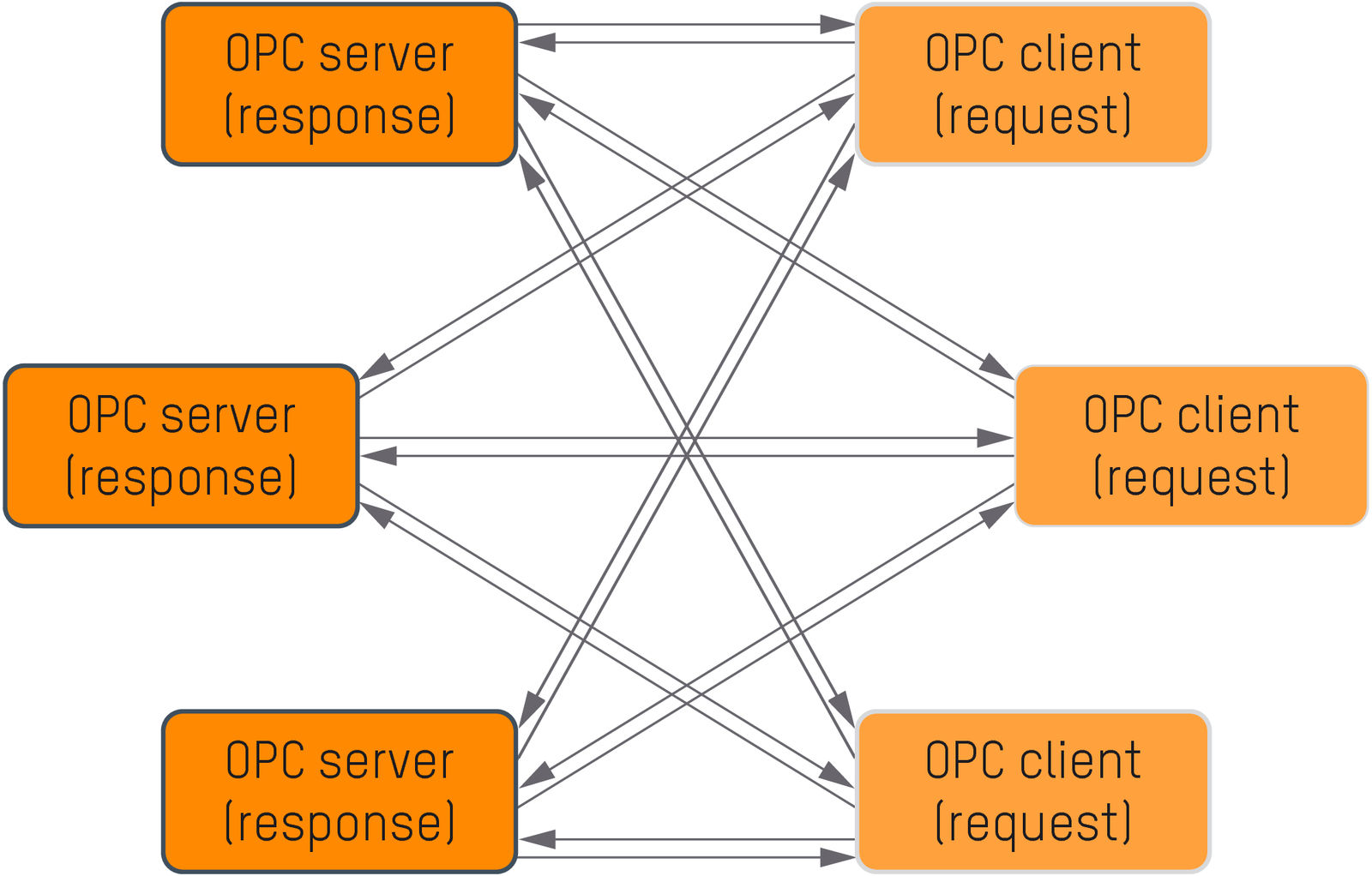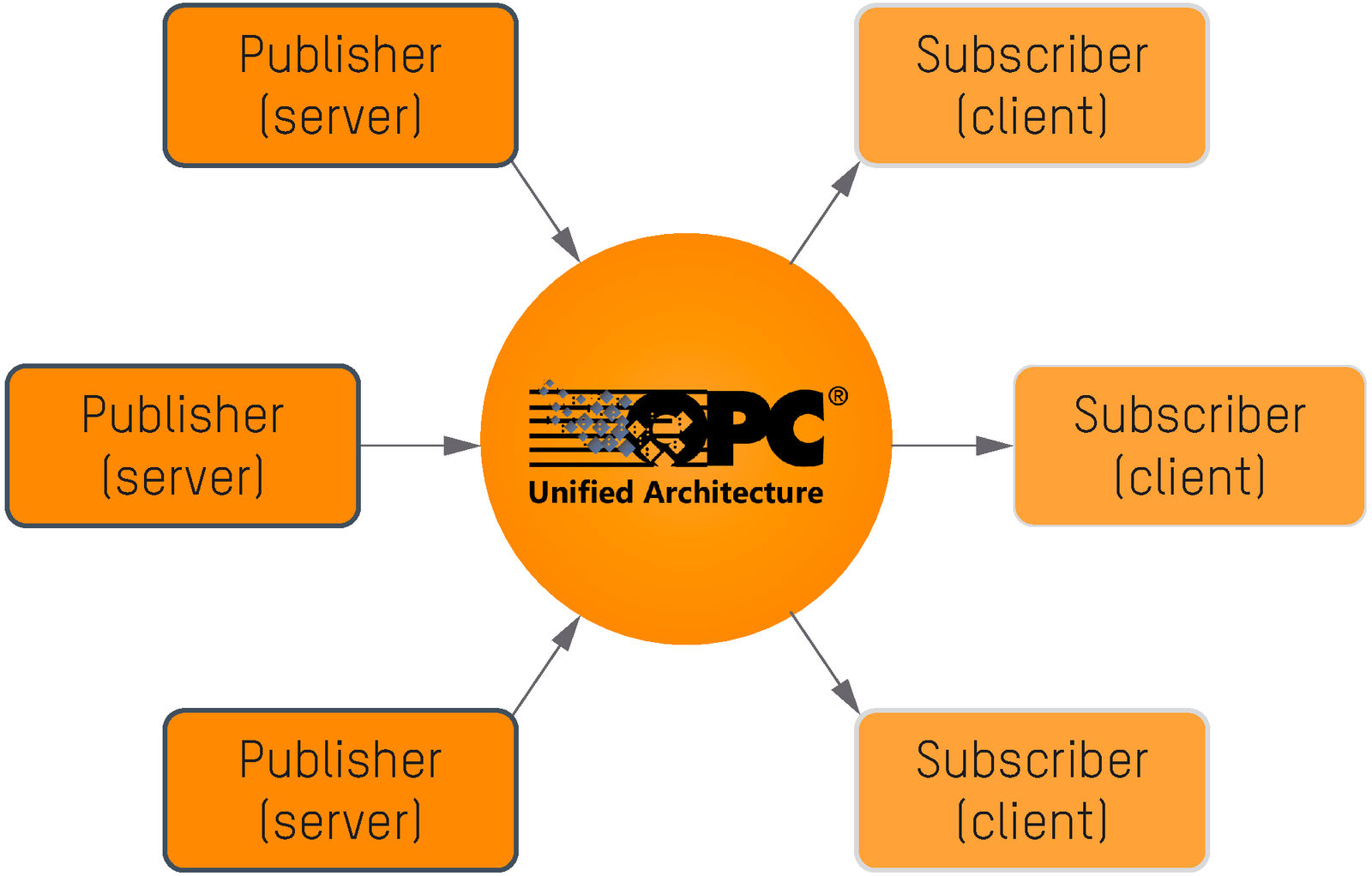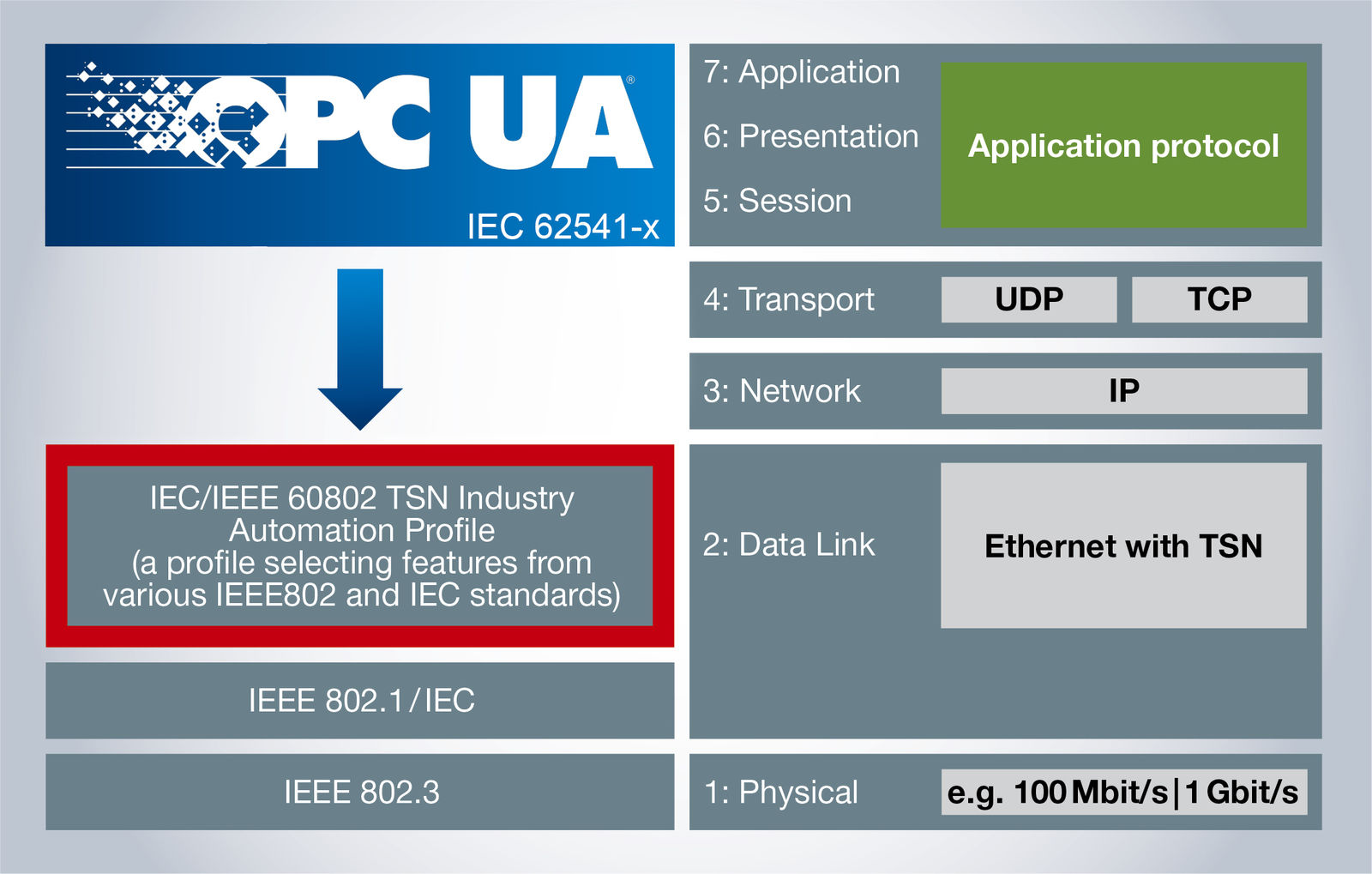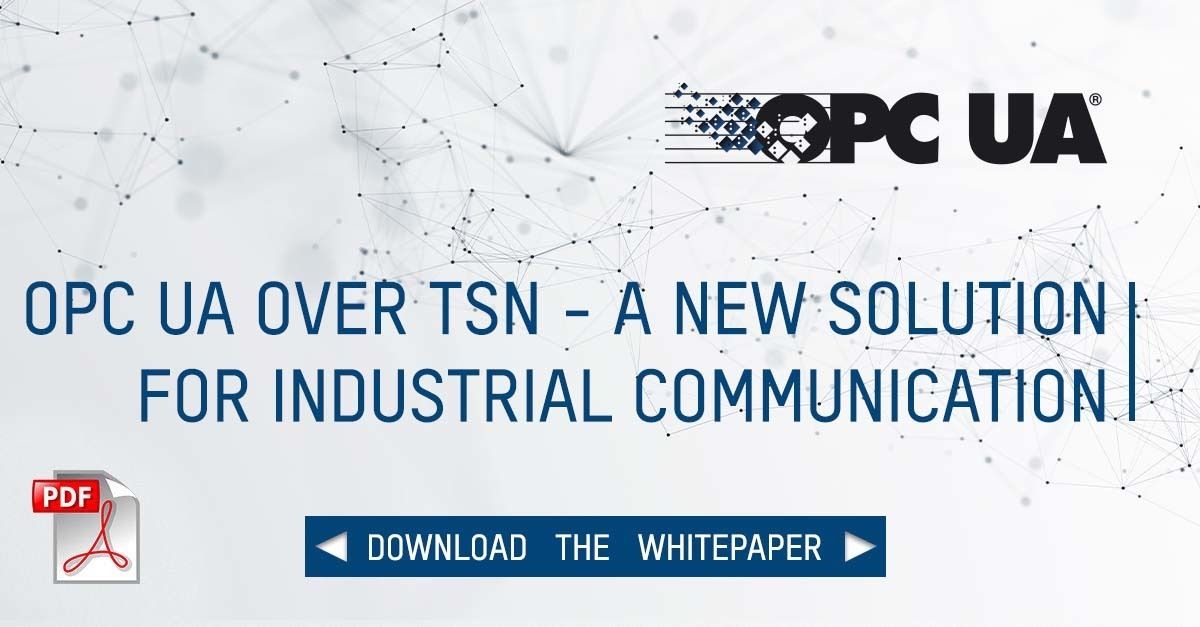
OPC UA is in widespread use: Its vendor independence, information model and integrated cybersecurity mechanisms have made it a popular solution for a broad variety of industrial applications.
When it comes to complex applications like safety, motion control and real-time communication, however, OPC UA has had its limitations. Since being expanded with the publish-subscribe model (pub/sub) and the Time-Sensitive Networking (TSN) Ethernet standard, OPC UA is now capable of real-time communication.
Publish-subscribe model
OPC UA used to work with a client/server mechanism, where a client sends a request to the server. The server processes the request and then sends a response back to the client. The client/server system will reach its limits if there are many too nodes on the network.
That was the reason for adding a publish-subscribe architecture to the OPC UA communication solution. The publish-subscribe model enables one-to-many and many-to-many communication. A server sends its data to the network (publish) and every client can receive this data (subscribe).


Real-time capability for standard Ethernet
The publish-subscribe model alone does not give OPC UA real-time capability. For this, the OPC Foundation turned to Time-Sensitive Networking (TSN), which adds a variety of real-time functions to the Ethernet standard IEEE 802. An exact time frame in which data is transferred can also be specified. The TSN standards needed for many applications had already been published by the IEEE 802.1 working group.

Vendor-agnostic motion control, safety and real-time applications
To ensure a cohesive, open approach to implementation of OPC UA together with TSN and associated application profiles, the OPC Foundation has launched the new Field Level Communications initiative. Standardization efforts for unified functionality currently taking place in the working groups of the Field Level Communications initiative are focused on I/O, motion control and safety applications.
The OPC Foundation's steering committee for field-level communications consists of 24 leading suppliers of automation technology. They include ABB, Beckhoff, Bosch-Rexroth, B&R, Cisco, Hilscher, Hirschmann, Huawei, Intel, Kalycito, KUKA, Mitsubishi Electric, Molex, Murr Elektronik, Moxa, Omron, Phoenix Contact, Pilz, Rockwell Automation, Schneider Electric, Siemens, TTTech, Wago and Yokogawa. As director of the initiative, Peter Lutz is responsible for driving its ongoing development and specification efforts.

Easily solve the challenges of today and tomorrow
OPC UA over TSN delivers 18 times more performance than conventional solutions. This makes it possible to implement time-critical applications, such as synchronizing a robot with an intelligent track system.
Whether fast and centralized or intelligent and distributed, drive solutions can be adapted to the needs of the application more easily with OPC UA over TSN than with any other solution. The result is a boost in both productivity and product quality.
Functionality proven in testbeds
Even outside the OPC Foundation's working groups, many other companies are also working to implement the new communication standard. Manufacturers of controllers, field devices and infrastructure evaluate the interoperability of their prototypes in testbed environments. Testbeds are an ideal way for device manufacturers to make efficient and well-targeted progress in the development of products with the new communication solution. Currently, the most active TSN testbeds are being conducted by the IIC and the LNI.
More on the topic
In the FAQ about OPC UA over TSN, networking specialist Stefan Bina explains the pivotal role the new unified standard will play in the next industrial revolution.
The OPC UA over TSN whitepaper offers an in-depth description of the interplay between the individual mechanisms.
